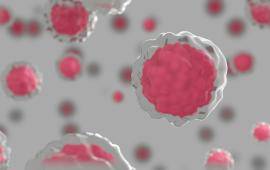
Integrative Oncology
Prostate Cancer natural treatment
Complementary treatment for prostate cancer is aimed primarily at minimizing the side effects of external radiotherapy since it has late side effects that appear some time after completing the radiotherapy treatment. The most frequent are at the digestive level (constipation and/or bleeding) and urinary (frequent desire to urinate). It is possible to eradicate the subsequent residual radioactivity with oral antioxidants and intravenous vitamin c at high doses, avoiding thus the late side effects of external radiation therapy.
In cases that require treatment with chemotherapy, the approach is aimed at minimizing side effects so that it is better tolerated and the protocol cycles can be completed without interruption. It is important to monitor immunity through the leukocyte count, since if the count is less than 3000, chemotherapy is postponed until it reaches these levels. On the other hand, the immune system is important in controlling tumor growth and once the chemotherapy cycles have finished, we must try to recover normal leukocyte values in the shortest possible time.
Food for prostate cancer
Diet plays a very important role for eliminate the toxicity of treatments and improve quality of life. Prostate cancer uses different metabolic pathways to obtain the energy and nutrients necessary for its growth. These metabolic pathways vary depending on the type of cancer and the stage.
It is important to personalize the patient's diet according to the type of prostate cancer, the stage and the levels of tumor markers.
Medicinal plants for prostate cancer
There are formulas from Chinese plants that enhance the immune system. Intravenous vitamin C also helps recover the immune system. Side effects such as nausea, vomiting, fatigue can be improved with precise formulas of Chinese plants aimed at strengthening the digestive system together with acupuncture.
On the other hand, we also have formulas specific Chinese medicines to prevent recurrences in prostate cancer that are used together with hormone therapy in hospitals in China with very good results. Several studies with the Chinese plant Salvia miltiorrhiza Radix have demonstrated its antitumor effect on prostate cancer:
- Acetonitrile extract of Salvia miltiorrhiza Radix exhibits growth-inhibitory effects on prostate cancer cells through the induction of cell cycle arrest and apoptosis. Lee J, Choi BY, Keum YS. Oncol Lett. 2017 May;13(5):2921-2928. doi: 10.3892/ol.2017.5820. Epub 2017 Mar 7
- Inhibition of proliferation of prostate cancer cell line DU-145 in vitro and in vivo using Salvia miltiorrhiza Bunge . Bae WJ, Choi JB, Kim KS, Syn Ha U, Hong SH, Lee JY, Hwang TK, Hwang SY, Wang ZP, Kim SW. Chin J Integr Med. 2017 Mar 23. doi: 10.1007/s11655-017-280
Types 
99% of prostate cancers develop on glandular cells.
The medical term for cancer that originates in glandular cells is called adenocarcinoma.
Normally when we talk about prostate cancer, we are referring to prostate adenocarcinoma, since other types of cancer in the prostate gland are very rare.
It is rare to find small cell carcinoma, sarcomas, transitional cell carcinoma, squamous or squamous cell carcinomas. Bladder, colon, lung cancer, melanoma, lymphoma, and other neoplasms can give rise to metastasis in the prostate.
Gleason score 
Prostate cancer is also classified by grades called the Gleason score. This score is based on how closely the cancer cells resemble healthy prostate tissue cells when viewed under a microscope. Less aggressive tumors generally look more like healthy tissue. Tumors that are more aggressive look less like healthy tissue and are more likely to grow and spread to other parts of the body.
The Gleason score classifies prostate cancer as follows:
- Gleason 6 or lower: The cells are well differentiated, meaning they look similar to healthy cells.
- Gleason 7: The cells are moderately differentiated, meaning they look somewhat similar to healthy cells.
- Gleason 8, 9, or 10: The cells are poorly differentiated or undifferentiated, which means they look very different from healthy cells.
There are 4 categories of risk groups, which are classified according to the PSA level, the size of the prostate, the Gleason score, and the stage of the cancer. The lower your risk, the lower the chance that prostate cancer will grow and spread.
- Very low risk. The tumor cannot be palpated with a rectal examination and is not visible during imaging tests, but was detected by needle biopsy. The PSA is less than 10 ng/ml. The Gleason score is 6 or less.
- Low risk. The tumor is classified as T1a, T1b, T1c or T2a. The PSA is less than 10 ng/ml. The Gleason score is 6 or less.
- Intermediate risk. The tumor has 2 or more of these characteristics:
- It is classified as T2b or T2c.
- PSA is between 10 and 20 ng/ml.
- It has a Gleason score of 7.
- High risk. The tumor has 2 or more of these characteristics:
- It is classified as T3a.
- The PSA level is greater than 20 ng/ml.
- It has a Gleason score between 8 and 10.
- Very high risk. The tumor is classified as T3b or T4. The histological grade is 5 for the main pattern of cell growth or more than 4 deep biopsies have indicated Gleason scores between 8 and 10.
Conventional Treatment 
Stage I
Small tumors within the prostate (T1 or T2a) with Gleason score <6 and PSA levels <10.
- In elderly men who do not present symptoms, active observation with periodic check-ups is recommended.
- In younger men or those who present symptoms, radical prostatectomy or radiotherapy is indicated.
Stage II
When the tumor is larger but is located in the prostate gland (stages T2b and T2c), with higher PSA levels and Gleason score, one of the following treatments is recommended:
- Radical prostatectomy
- External radiation therapy
- Brachytherapy (selective radiotherapy to the prostate)
- Combined brachytherapy and external radiotherapy
Radiation therapy can be combined with hormonal therapy if there is a risk of recurrence. Risk is assessed by PSA levels and Gleason score.
Stage III
The cancer has infiltrated beyond the outer layer of the prostate into adjacent tissues, but has not reached the bladder or rectum (T3). There is no extension to lymph nodes or distant organs. This stage has a higher risk of recurrence after treatment.
One of the following treatments is recommended:
- External radiation plus hormone therapy
- External radiation plus brachytherapy
- Radical prostatectomy + radiotherapy
Stage IV
The cancer has spread to the bladder or rectum (T4) or distant organs such as bones. The goal of treatment is to keep the cancer under control for as long as possible and with the best possible quality of life.
Treatment options are as follows:
- Hormonal therapy with chemotherapy.
- External radiotherapy plus brachytherapy. Hormonal therapy
- Surgery to relieve symptoms
Treatment for bone metastases: Denosumab, external radiation therapy directed to the bone or radiopharmaceuticals (strontium-89, samarium-153 or radium 223).
Ask for opinion and find an appropriate solution to your problem
ONLINE Doctor Consultation






